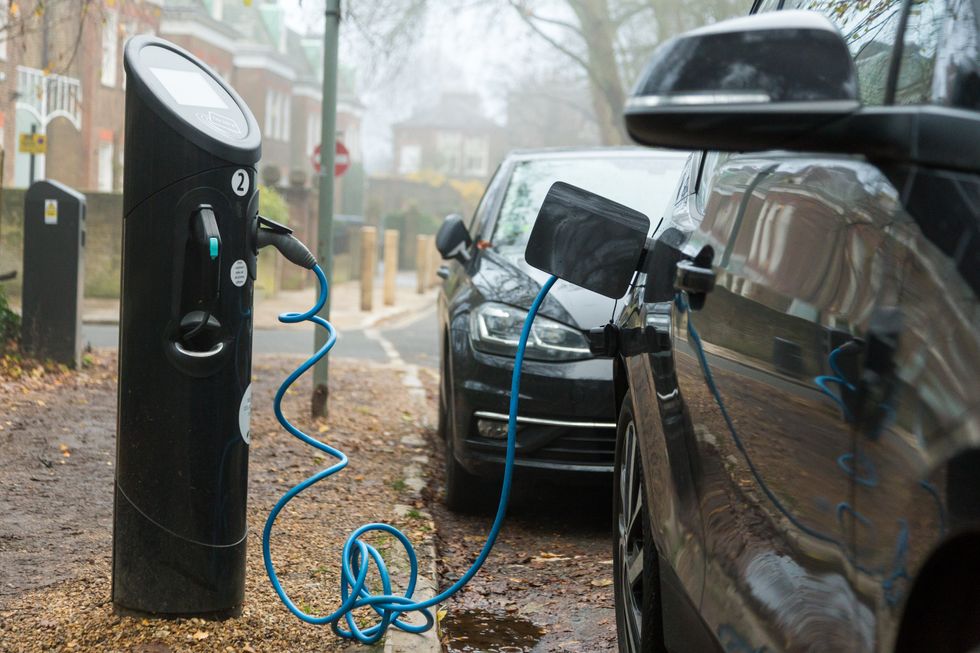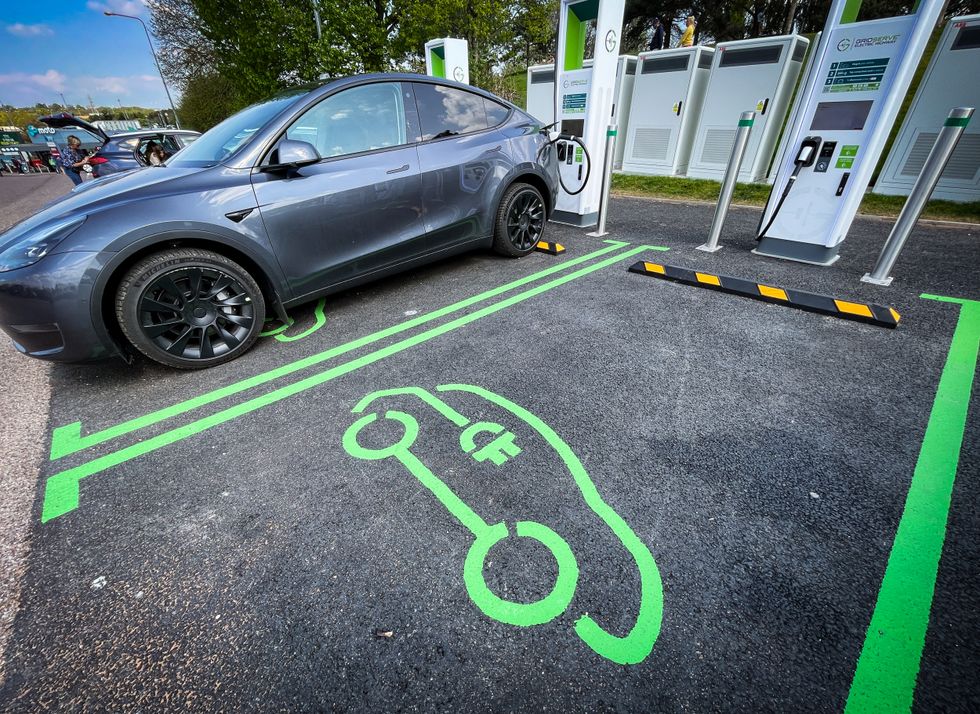Electric car drivers are at risk of being stranded due to “charging deserts” across the North of England and rural areas, the National Audit Office (NAO) has warned.
A new NAO report found that while the UK is on track to meet its target of installing 300,000 public charging points by 2030, there is a growing regional divide in the network.
The report revealed significant gaps in the UK’s electric vehicle charging network, particularly outside London and the South East.
Now experts have warned that the uneven rollout threatens to leave electric vehicle drivers unable to complete journeys on several major routes, with some busy A-roads having only limited charging infrastructure.
Do you have a story you’d like to share? Get in touch by emailing[email protected]

There is significant charging disparity between London and the North of England
GETTY
Drivers with just 10 per cent battery remaining could find themselves unable to reach rapid charging facilities on multiple key routes.
The routes include the A49 between Hereford and Shrewsbury which stands out as one of the major routes lacking adequate charging facilities. Similar issues impact the A35 near Southampton, where drivers could struggle to find charging points when running low on power.
The A66 through Penrith is another significant route identified as having insufficient charging infrastructure.
The regional divide in charging infrastructure is stark, with 44 per cent of public charge points concentrated in London and the South East, according to the report. Just 15 per cent of charging points in England are located in rural areas.
The North West, Yorkshire and the Humber, and Northern Ireland are particularly impacted when it comes to EV infrastructure.In Yorkshire, there are only 56 charging points per 100,000 people, compared to 233 in London.
Ginny Buckley, chief executive of Electrifying, a website for car buyers, told the Telegraph: “This disparity when it comes to charging infrastructure can’t continue if we’re to bring everyone along on the electric journey.”
Meanwhile, Vicky Read, chief executive of industry body Charge UK, noted that while a new charge point is added to the network every 25 minutes on average, planning permission and grid connections need to be “simpler and faster.”
Already, the UK has missed its target of installing at least six ultra-rapid charging points at every motorway service station in England by 2023. Currently, only 62 per cent of service areas have met this requirement as of July 2024.
The Department for Transport has now set a new target of having fast chargers at 100 out of 114 stations across England by mid-2025.
Geoffrey Clifton-Brown, the Conservative chairman of the Commons public accounts committee, said: “While good progress has been made on the rollout of public charging points for electric vehicles, there is still significant variation in their availability across the country.
“If the Government is serious about encouraging the take-up of electric vehicles, it must ensure the public can reach reliable, convenient and accessible charging points.”
A Government spokesman responded that “good progress” was being made, with over 72,000 public chargers now available – a near 40 per cent increase compared to December 2023.
LATEST DEVELOPMENTS:
- Local areas given more powers to introduce 20mph limits on UK roads – ‘Easier and more open’
- Drivers condemn two-tier parking levy in tourist town as visitors get slapped with ‘unreasonable’ price hikes
- Motorists warned of busiest Christmas travel period in a decade as millions hit the roads – ‘Extra caution’
 All electric vehicle charging devices are expected to have a 99 per cent reliability rate GETTY
All electric vehicle charging devices are expected to have a 99 per cent reliability rate GETTYThe report added: “Consumers have numerous concerns over using public charge points, which Government has put in place regulation to address.
“These concerns include complexity in using charge points, with operators having different ways to pay; pricing being unclear or unduly expensive; and malfunctioning or inoperative charge points. It is still too early to say whether OZEV’s regulatory intervention has helped, as many of its requirements only came into force from November 2024.”